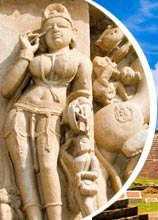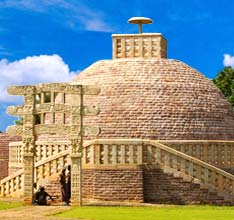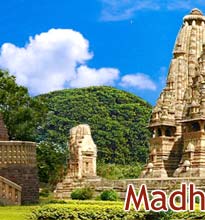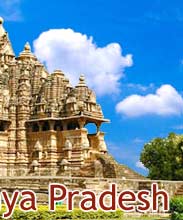 Located
46 km to the north of Bhopal, Sanchi is a place that gives you a vivid
glimpse of the entire gamut of Indian Buddhism. It is where King Ashoka
gave shape to his newly acquired fervor for the religion. This led to
the flowering of many stupas and Buddhist monuments in the place. These
ancient remnants help one in understanding the inherent spirit of the
religion and also get the picture of the genesis, efflorescence and
collapse of Buddhist art and architecture. Apart from its plethora of
attractions, Sanchi is also an important stopover for visiting other
tourist attractions near the place. Get to know more about excursions
from Sanchi in the article below.
Located
46 km to the north of Bhopal, Sanchi is a place that gives you a vivid
glimpse of the entire gamut of Indian Buddhism. It is where King Ashoka
gave shape to his newly acquired fervor for the religion. This led to
the flowering of many stupas and Buddhist monuments in the place. These
ancient remnants help one in understanding the inherent spirit of the
religion and also get the picture of the genesis, efflorescence and
collapse of Buddhist art and architecture. Apart from its plethora of
attractions, Sanchi is also an important stopover for visiting other
tourist attractions near the place. Get to know more about excursions
from Sanchi in the article below.Udaigiri
The spurts of creative outpourings of the Guptas were legendary and served as the hallmark of the dynasty. If you want to have a rich glimpse of architectural legerdemain of the Guptas, just check out the Udaigiri Caves of Madhya Pradesh.
Videsha
Located 10 km to the south of Sanchi, Videsha was earlier known as Besnagar and was an important township of the area. During 3rd century BC, the place was governed by Ashoka. This legendary place was also home to his wife. A trip to Videsha commands a visit to the Heliodoros Pillar, of 5th AD, dedicated to Lord Vishnu, which marks the conversion of the Greek Ambassador of Taxila to Hinduism. This monolithic free-standing column is still considered holy by the local fisher folk and known as 'Khamb Baba' amongst them.
Raisen
23 km from Sanchi, en route to Bhopal; lays Raisen that borrows its name from its massive fort that rests on a sandstone hill. The town is cozily tucked at the foot of this hill. This hilltop fort goads tourists to dive in its lap, with its colorful display of temples, cannons, three palaces, forty wells and a huge tank. It was an important seat of administration during the Hindu rule. Ancient murals that date back to many centuries are also treasured in the nearby caves of the place.
Gyaraspur
41 km to the north-east of Sanchi rests this medieval place. It derives its name from the big fair that was once the pride of the town and was held every eleventh month of the year (Gyaras). Gyaraspur is one of the must-visit tourist places near Sanchi. Though the place stands in a dilapidated state today, it is still a striking treasure house of ancient temples. 'Athkhamba' (Eight Pillars), 'Chaukhamba' (Six Pillars) and Mahadev temple, which can be traced back to the 9th and 10th centuries, are the prime attractions of the place.
Udaypur
The colossal Neelkantheswara Temple is the mark of Udaypur, located 60 km from Sanchi. This temple is a brilliant masterpiece that holds out the exactitude of 11th century Paramara architecture. The well-proportioned and gracefully done Shikhar (spire) and alluring carvings that adorn it, bring to notice the exemplary temple architecture of the period. Carved with red sandstone and elevated on a lofty platform, the edifice consists of a Garbha Griha (shrine room), a Sabha Mandap (Hall) and three Parvesh Mandaps (entrance porches).
Sonari and Satdhara
Sonari, 10 km to the southwest of Sanchi, is also a well-known monastic site. It houses eight majestic stupas that are instantaneous tourist delight. Likewise, the Buddhist complex at Satdhara is sited 11km to the west of Sanchi, on the bank of the Beas River, and domiciles fourteen monasteries and 34 stupas belonging to the Mauryan period. The most notable is Stupa I, with its staggering height and broad circumambulatory path around the base. The remains of many apsidal temples are also found in the place.









